► All-new sixth generation
► Hybrid and PHEV driven
► Efficient, but pricey
Honda may not have quite been the first to launch a ‘lifestyle’ SUV, but its first-generation CR-V came hot on the heels of the original Toyota RAV4 and helped popularise the segment by looking like an off-roader but driving like a car.
Well, the Honda CR-V is now in its sixth generation, and as a global best-seller it’s one Honda’s undoubtedly hoping to get right.
It’s undergone much the same transformation as the latest Civic – a minimally-styled but eminently sensible interior, hybrid-only powertrains, and a more conventional SUV silhouette. Rivals are numerous and range from the excellent Kia Sportage to the upmarket BMW X3.
Looks chunky.
Well it’s bigger than its predecessor, for a start. It’s 80mm longer, with 40mm of that in the wheelbase – though just 10mm wider, so it doesn’t feel much less wieldy. Though it’s a large car, it’s firmly a five-seater, like the Toyota RAV4.

It also has a slightly more conventional silhouette, with a longer bonnet and more upright stance that naturally boost practicality further. Those looks are backed up by standard four-wheel drive in regular hybrid models, while the PHEV is front-drive only.
Do you still get that godawful hybrid engine?
There are two hybrids available, both related to the excellent e:HEV system in the latest Civic. That means a 2.0-litre Atkinson cycle petrol engine and a pair of electric motors – one for traction and one acting as generator. While it works similarly to the previous-generation CR-V hybrid, it’s hugely better in every regard.
The engine doesn’t directly drive the wheels much of the time, instead turning the generator and allowing the electric motor to take care of moving the vehicle at lower speeds. At higher speeds, a lock-up clutch engages for direct drive from the engine to the wheels, a system Honda says is more efficient.
The regular self-charging hybrid model uses a 1.06kWh battery and is virtually identical to the system now used in the Civic and ZR-V. But the CR-V is also available with Honda’s first plug-in hybrid powertrain, too.
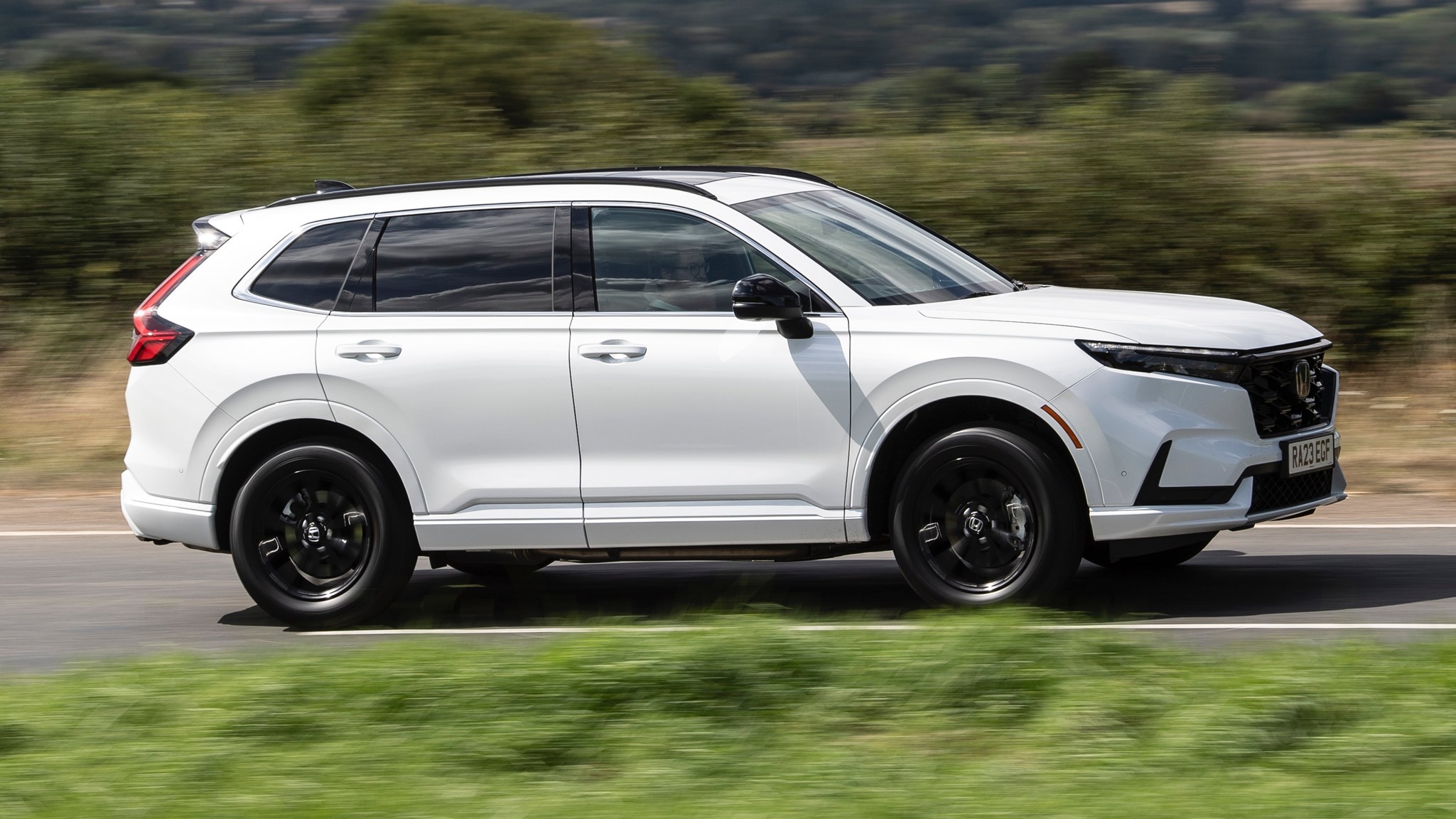
The components are arranged in the same format but there’s a much larger 17.7kWh battery – this is good for a 51-mile WLTP range, which is up there with the best. Strong efficiency means just 18g/km of CO2 in official tests, plonking this CR-V in the lower eight per cent company car tax band.
There’s also a lower ratio available for the lock-up clutch in this model, which is suitable for high loads or towing. The PHEV can tow up to 1500kg, while the self-charger manages 750kg.
Since drive comes from the same traction motor regardless of battery size, power is 181bhp and 335Nm of torque.
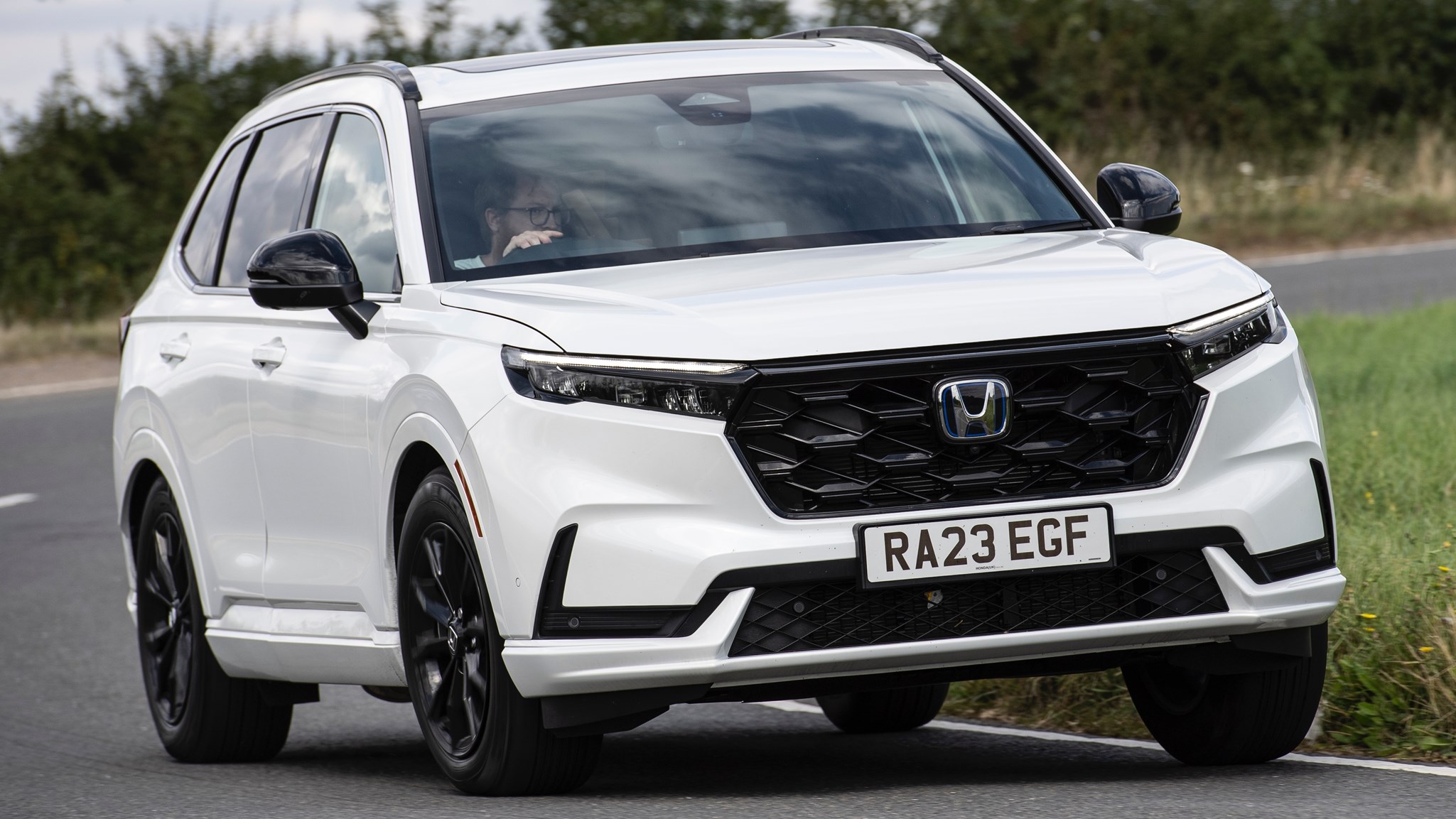
What’s it like on the road?
Setting off as a pure EV, the CR-V feels more balanced than much of its plug-in hybrid SUV opposition. Though overall power output looks rather weedy compared to the likes of the Toyota RAV4 plug-in (302bhp) or the Mazda CX-60 (322bhp) the CR-V has the distinct advantage that it doesn’t really shuffle power sources about. So you get the full 181bhp the entire time you’re driving, whether the engine’s on or off – until you hit the motorway, when the lock-out clutch puts you onto the petrol engine.
It’s certainly willing at low speeds but if you were hoping for the thump in the back that many powerful rivals provide you’d best look elsewhere. Whether you opt for the HEV or PHEV, you’re looking at a 9.4-second 0-62mph time. Overtaking is doable but requires some planning with just two in the car. We suspect it’ll feel rather flat with a full load on board, especially if you’re towing, too.
However, both offer a very relaxed and smooth drive. Setting off as an EV, it’s silent, but even when the engine kicks in it’s unobtrusive. Power feels ample round town and it’s a relaxed cruiser.
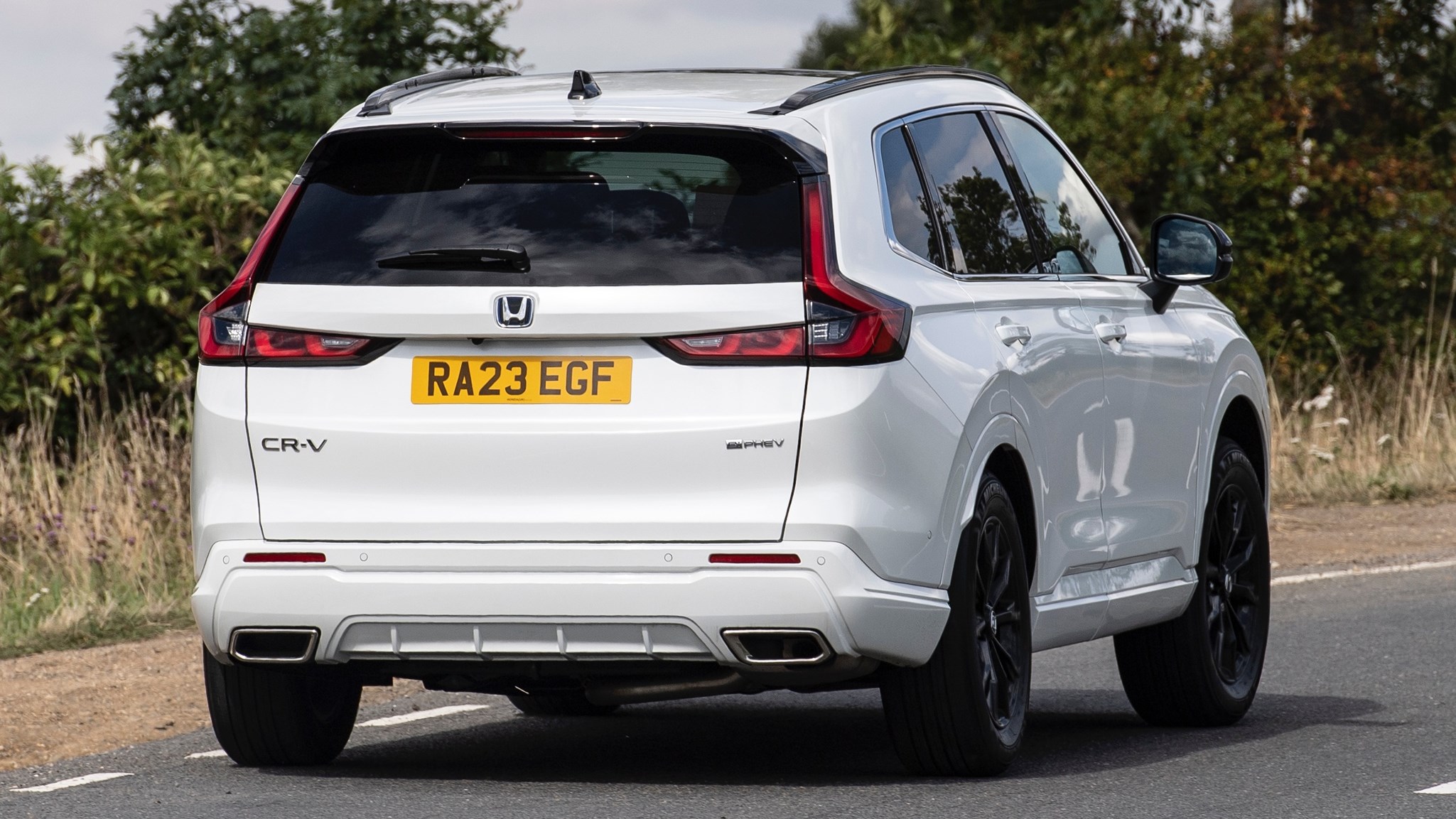
Ride and handling have taken a leaf from the Civic’s book, and the steering’s nicely weighted and direct through the thin-rimmed helm. You can feel the bulk over the front axle, though – it thuds over bumps at low speed and front-end grip isn’t as good as we’d like. The HEV is a bit more agile than the PHEV while the 4WD system helps drive you out of corners more effectively. Even so, an X3 is a better steer.
There are some strings to the Honda’s bow, though. The brake feel is excellent, not always a given in PHEVs, and Honda’s also put real emphasis on visibility. The low window line, thin pillars and sensibly-sited door mirrors minimise blind spots and make this a pleasure to pilot round town. Not enough manufacturers care about this at the moment.
It’s just a shame not all of the safety features are so sensible. Great visibility and 11 airbags, we can get behind. There’s also a clever blindspot camera that comes on when you indicate left but, bafflingly, its feed displays in the central screen rather than the instrument panel – displacing the sat-nav. Hopefully you’re not coming up to a complicated exit. There’s also a highly irritating overspeed warning that needs turning off afresh every time you start up – mandated, so not Honda’s fault, but jarring nonetheless.

How efficient is it?
Our short test route didn’t give us much opportunity to put the CR-V’s powertrain to the test. The figures look excellent – the large battery plays well for low CO2 levels and company car tax, while the clever powertrain functions perfectly well as a self-charging hybrid even when it’s run out of electricity.
Honda claims around 45mpg from the PHEV when the battery’s fully discharged, though we saw more like 55mpg when we simulated this with the ‘Save’ driving mode. We tried the HEV on a longer two hour route including a fair few altitude changes. It’s 39mpg isn’t astonishing, but isn’t far off the claimed 42mpg.
Given most PHEV SUVs become rather heavy petrol-powered bricks with a discharged battery, this is great progress and should make longer trips less of a chore. And the petrol tank hasn’t been reduced to a thimble to make room for the battery, either – over 500 miles to a tank+battery should be easily possible if the right foot’s applied carefully enough.
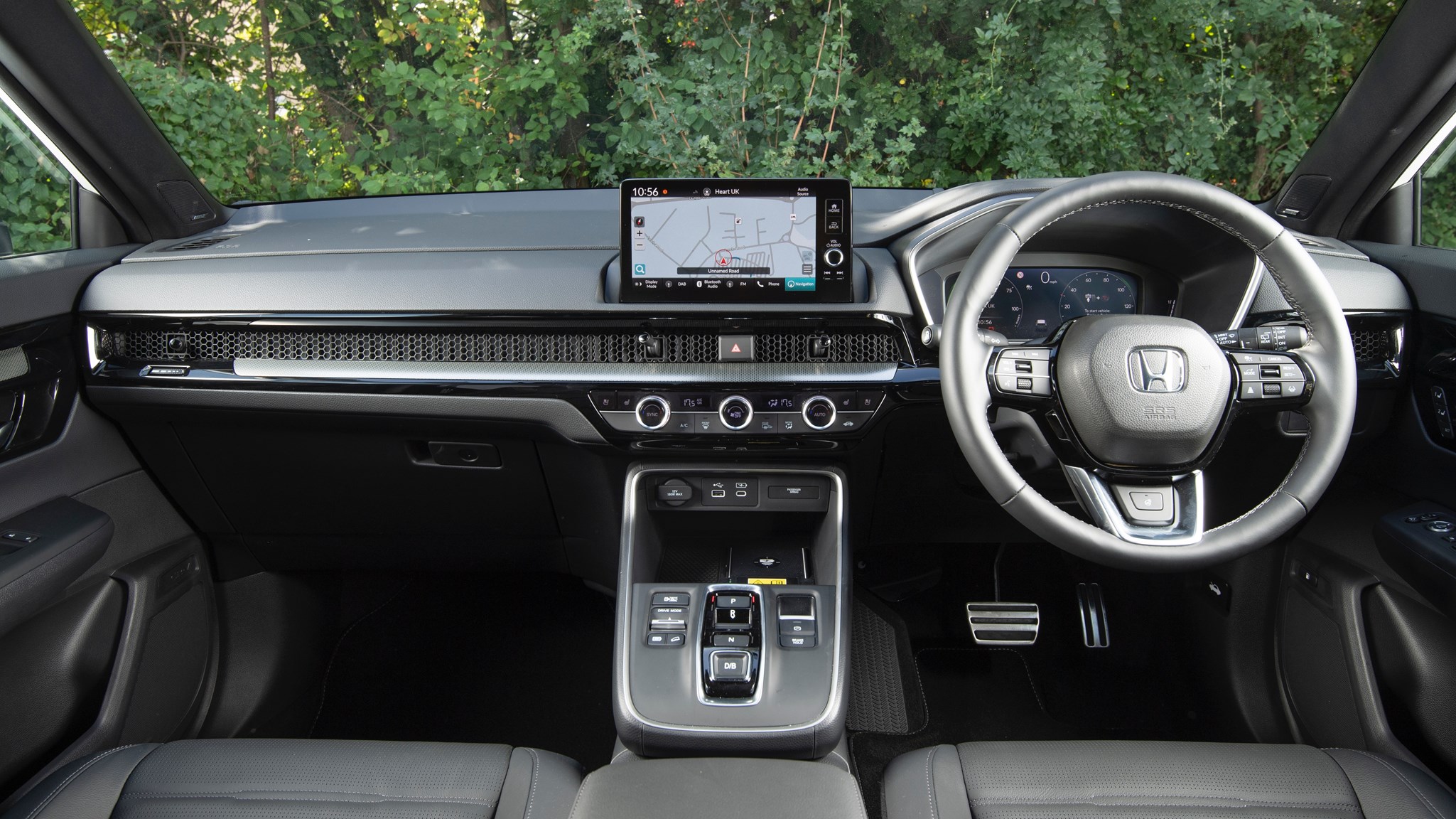
If you use Honda’s own navigation, the car will intelligently apply its battery where it’s most needed, improving efficiency. This also applies to towing, which is clever – the CR-V will ensure it has enough juice in the tank to allow the battery to ‘boost’ the petrol engine up inclines.
What’s it like inside?
Like the Civic, it’s a model of function over form, and all the better for it. The wide dashboard contains a myriad of physical switchgear, including a full set of climate controls, hybrid controls and shortcuts for the media system.
The steering wheel’s loaded with proper buttons, too, and they make total sense. So does the digital instrument cluster. So too does the 9.0-inch infotainment screen. Honda’s the sort of company that labels its switchgear with words and symbols, and life’s so much easier because of it.
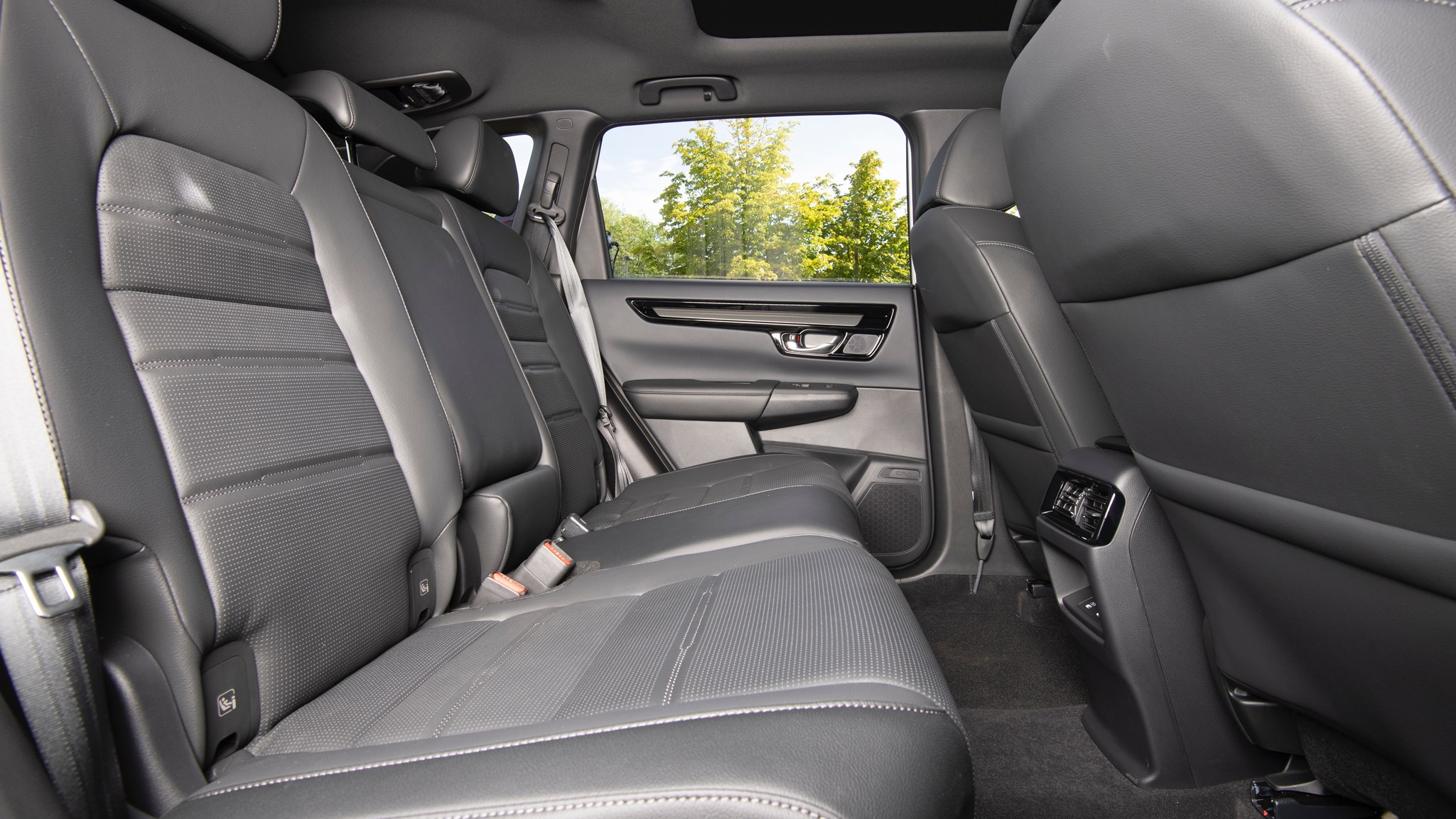
It’s spacious, too. Adults can stretch out in a rear seat that reclines (quite far) and slides fore and aft by 190mm. There’s also a huge boot – 586 litres in capacity. And, unusually, plug-in hybrid models get 72 litres more space than the self-charging hybrids, due to the position of the battery under the rear seats.
What it’s not is very colourful, so you’d better like black and silver.
How much?
That’s the kicker. Against rivals – many of them with quite a lot more power – the CR-V looks rather pricey. The PHEV is only available in a single, highly-specified trim level, and as such comes in at a chunky £53,995. That’s almost as much as an X3, and nearly ten grand more than a RAV4. The HEV is cheaper, but still in the mid-forties. At least you get loads of standard equipment, even if you’ve opted for an entry-level Elegance model.
Yes, the CR-V will be reliable as anything – but so will a RAV4, and Toyota gives you up to ten years warranty cover to Honda’s mere three. And if a Toyota’s not quite posh enough, the RAV4’s sibling – the Lexus NX – is available for pretty much the same price as the Honda.
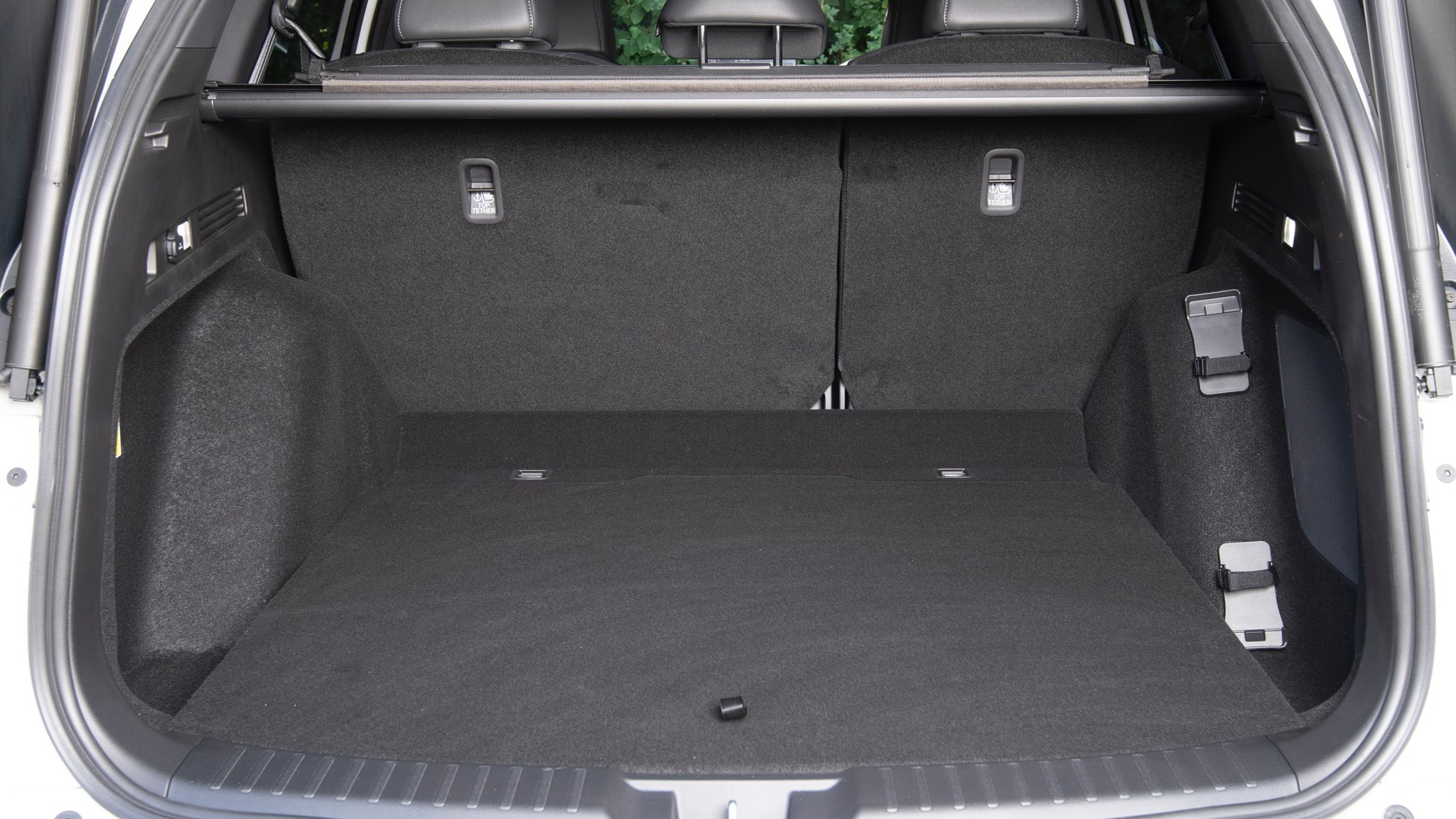
That makes the CR-V’s position much less stable. At least the initial finance offers are competitive enough to close the pricing gap somewhat.
Verdict
Bigger and better than ever before, if the CR-V was five grand cheaper and possibly a little quicker we’d find it easy to recommend. As ever, it comes down to the truly excellent – if shockingly dull – competitors in this crowded class, which offer much of the same ability for less cash.
However, if you’re after a dependable family SUV with loads of space, excellent efficiency and an interior that’s unlikely to ever annoy you, the CR-V still makes a sound choice – it’s just one without much sparkle.